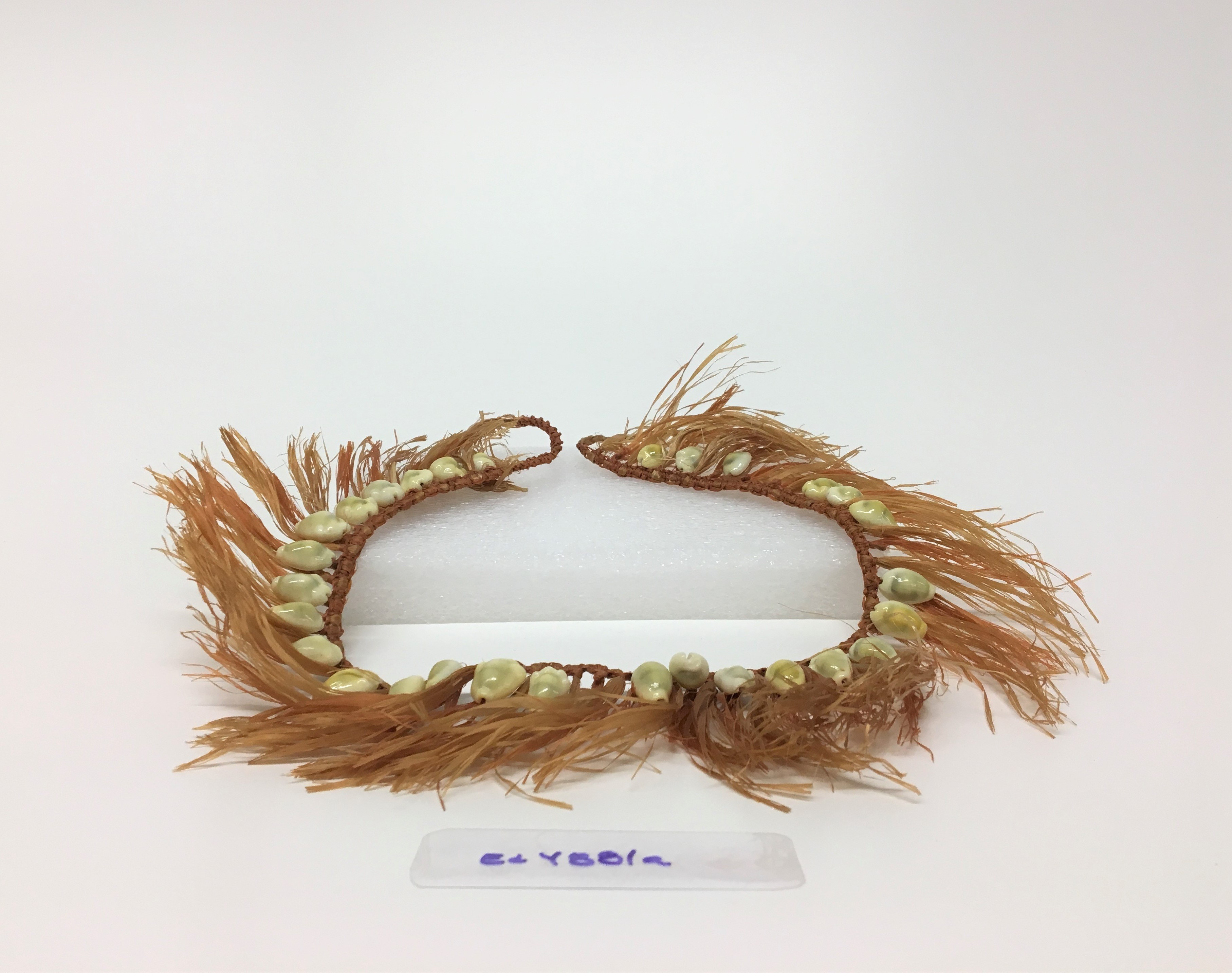
M̗arm̗ar (necklace)
libbukwe / likajjid (cowrie shell)
jab (jān l̗o̗) (hibiscus fiber)
kimej (coconut leaves (new shoot))
ED# 4881a
Accessioned February 1962. Gift of Gladys Davis.
M̗arm̗ar ej juon iaan m̗wen̄an ko rej m̗ōttan wōt men ko rej kōkkal̗l̗eik maron̄ eo an juon-im-juon ilo jukjuk-im-pād ko M̗ajel̗. M̗arm̗ar ko rōiiaeae im rōrōōj me libbukwe ko ie rōkilep im rōjeja loi kab tōrerein m̗arm̗ar kein raitok l̗o̗k rej n̄an ri-tōl ro ilo m̗anit. M̗arm̗ar in ej kōm̗m̗an jān kimej, libbukwe im jab eo me jān kilin l̗o̗. Bōk juon jab im pirōke ippān bar juon jab. Rej l̗oore jekjek in m̗ae iien eo ejino wal̗o̗k an mijel. Innām, rej kapool̗e tōrerein kōn ejja jab. Libbukwe ko rōkōn kōjerbali n̄an l̗am eo. Mekarta emaron̄ kōjekjekin wōt n̄e epidodo āje, akō ebōk iien n̄an kōpooj jab eo im men ko jet kōbwebweien im pukoti libbukwe ko (me jet iaer elōn̄ bōkāier).
Necklaces were part of the jewelry associated with one’s rank in Marshallese society. Colorful necklaces which contain larger or rarer shells and longer fringes belong to high ranking people. This necklace is made from cowrie shells and hibiscus fiber. The hibiscus bark is braided together until it forms one thick line. Then, the fringe is added with more hibiscus fiber. The longer the fringe, the higher the rank. Cowrie shells are often included in the design. Though it may seem quick to put it together, it takes time to process the hibiscus fiber and other elements and locate the cowrie shells (some of which are seasonal).

Add a Comment